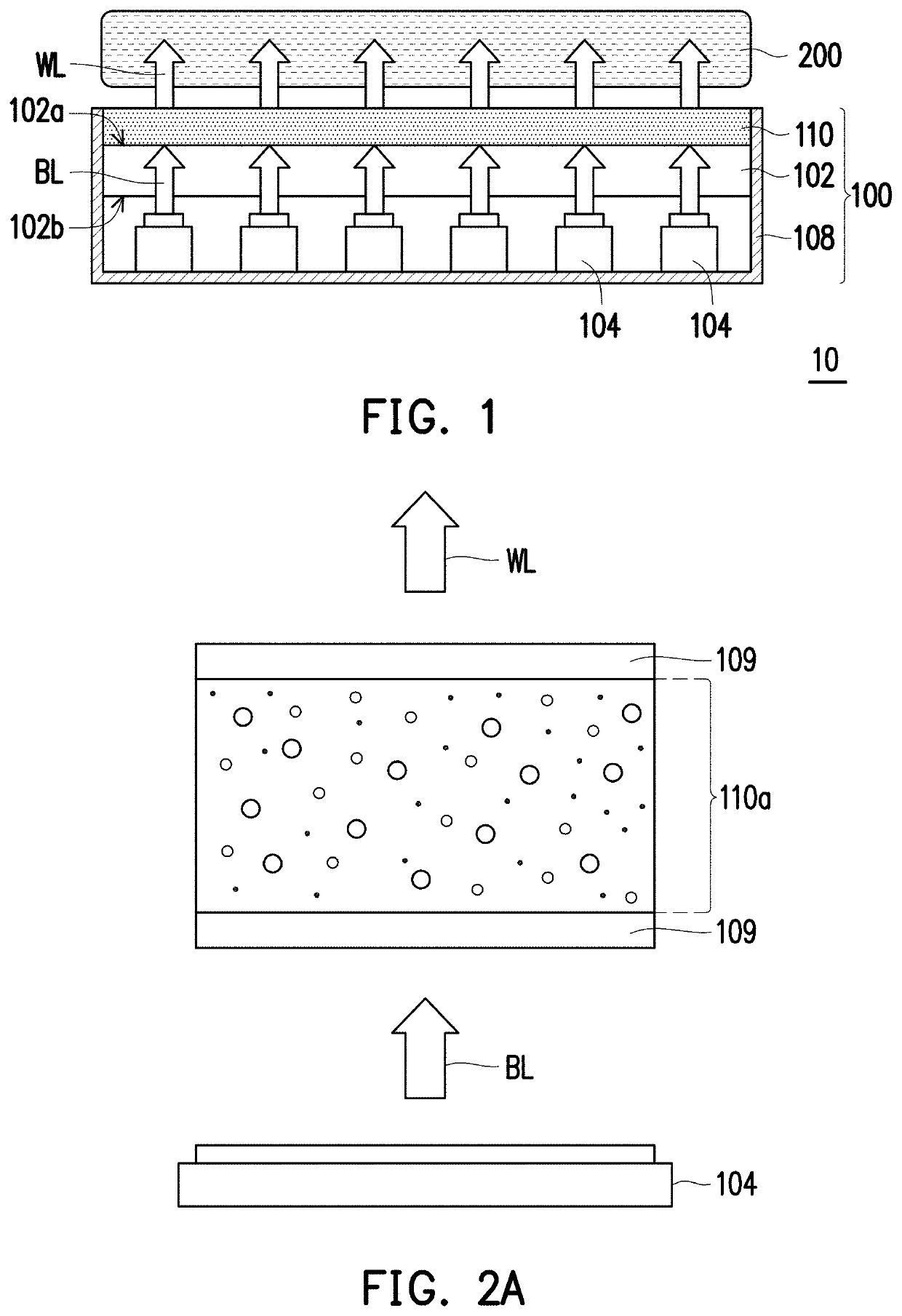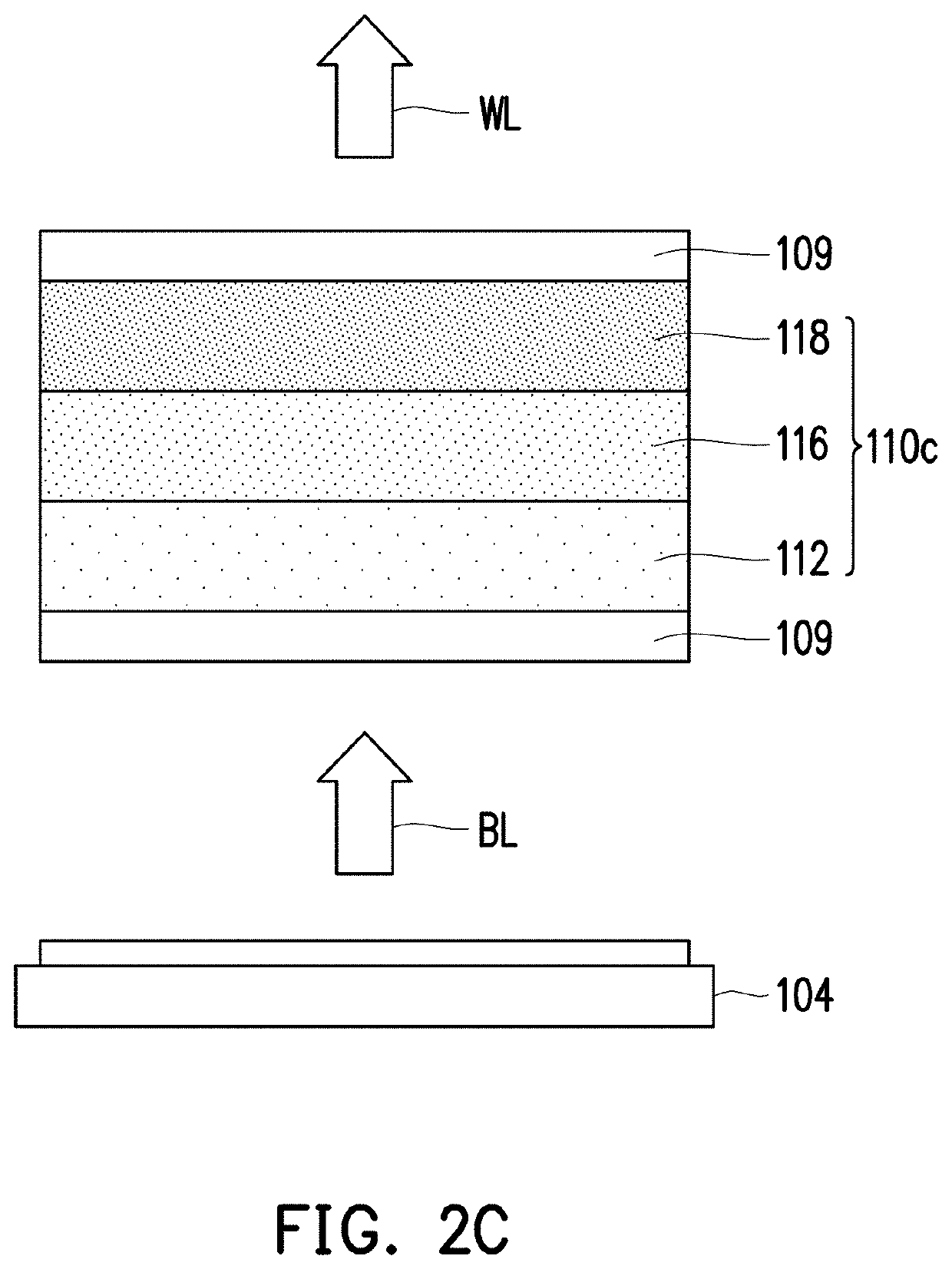Backlight module with composite color-conversion optical material
a color conversion and backlight module technology, applied in optics, planar/plate-like light guides, instruments, etc., can solve the problems of narrow color gamut, color gamut of display, and inability to exhibit specific colors
- Summary
- Abstract
- Description
- Claims
- Application Information
AI Technical Summary
Benefits of technology
Problems solved by technology
Method used
Image
Examples
experiment example 1
[0088]First, 0.09 wt % of red quantum dots (CdSe / ZnS quantum dots), 0.9 wt % of green quantum dots (CdSe / ZnS quantum dots), 2.7 wt % of cyan quantum dots (CdSe / ZnS quantum dots) were mixed with acrylic resin precursors and cured by ultraviolet (UV) light to form a quantum dot layer. The quantum dot layer is then placed in the backlight module 100 of FIG. 1. Thereafter, a luminometer is used to measure the quantum dot layer. The results are shown in FIG. 5 and FIG. 6.
experiment example 2
[0089]First, 0.09 wt % of red quantum dots (CdSe / ZnS quantum dots), 1.8 wt % of green quantum dots (CdSe / ZnS quantum dots), 0.3 wt % of yellow quantum dots (CdSe / ZnS quantum dots) were mixed with acrylic resin precursors and cured by ultraviolet (UV) light to form a quantum dot layer. The quantum dot layer is then placed in the backlight module 100 of FIG. 1. Thereafter, a luminometer is used to measure the quantum dot layer. The result is shown in FIG. 6.
[0090]Referring to FIG. 5, since the cyan light (having an emission wavelength of about 490 nm) emitted by the cyan quantum dots of Experimental Example 1 replaces a portion of the blue light (having an emission wavelength of about 450 nm) from the light source 104, the blue light from the light source 104 in Experimental Example 1 is lower than the blue light from the light source 104 in Comparative Example 1. This effectively reduces the blue light harmful to eyes, so as to provide better eye protection. In addition, as shown in ...
experiment example 3
[0092]2.7 wt % of cyan quantum dots (CdSe / ZnS quantum dots), 0.9 wt % of green quantum dots (CdSe / ZnS quantum dots) were mixed with acrylic resin precursors and cured by ultraviolet (UV) light to form a quantum dot layer. Next, KSF was mixed with an encapsulant (OE-6370 HF, purchased from Dow Corning®) to encapsulate the blue LED. Thereafter, the quantum dot layer was disposed on the packaged blue LED (the structure is as shown in the backlight module 400a of FIG. 4A), and is measured using a luminometer. The results are shown in FIG. 7 and FIG. 8.
PUM
| Property | Measurement | Unit |
|---|---|---|
| wt % | aaaaa | aaaaa |
| emission wavelength | aaaaa | aaaaa |
| emission wavelength | aaaaa | aaaaa |
Abstract
Description
Claims
Application Information
 Login to View More
Login to View More - R&D
- Intellectual Property
- Life Sciences
- Materials
- Tech Scout
- Unparalleled Data Quality
- Higher Quality Content
- 60% Fewer Hallucinations
Browse by: Latest US Patents, China's latest patents, Technical Efficacy Thesaurus, Application Domain, Technology Topic, Popular Technical Reports.
© 2025 PatSnap. All rights reserved.Legal|Privacy policy|Modern Slavery Act Transparency Statement|Sitemap|About US| Contact US: help@patsnap.com



